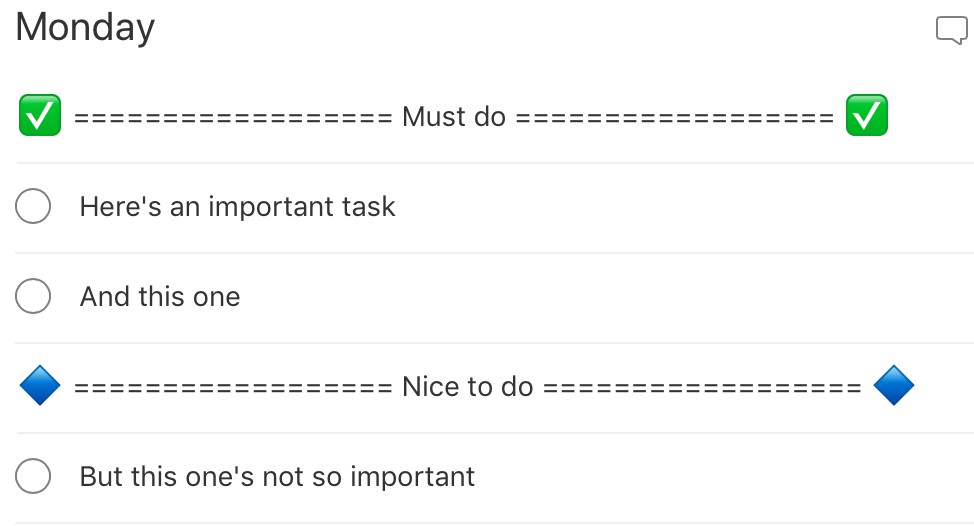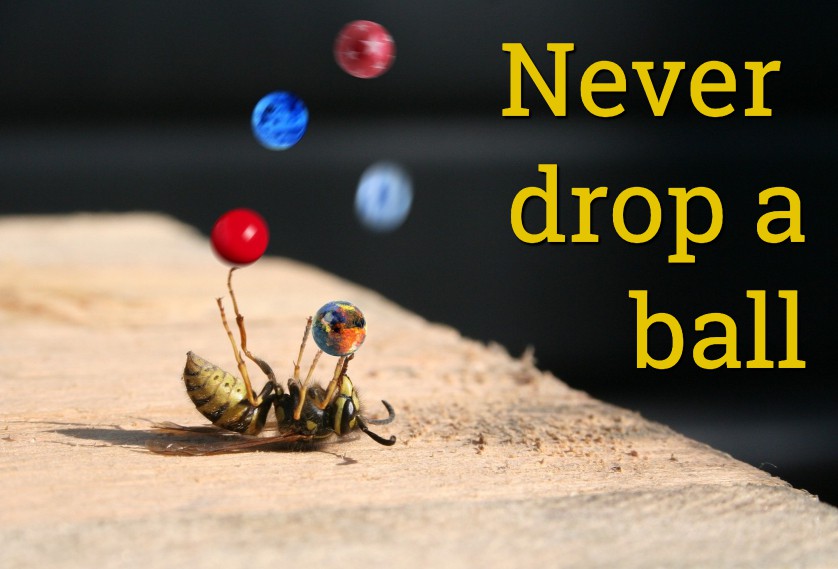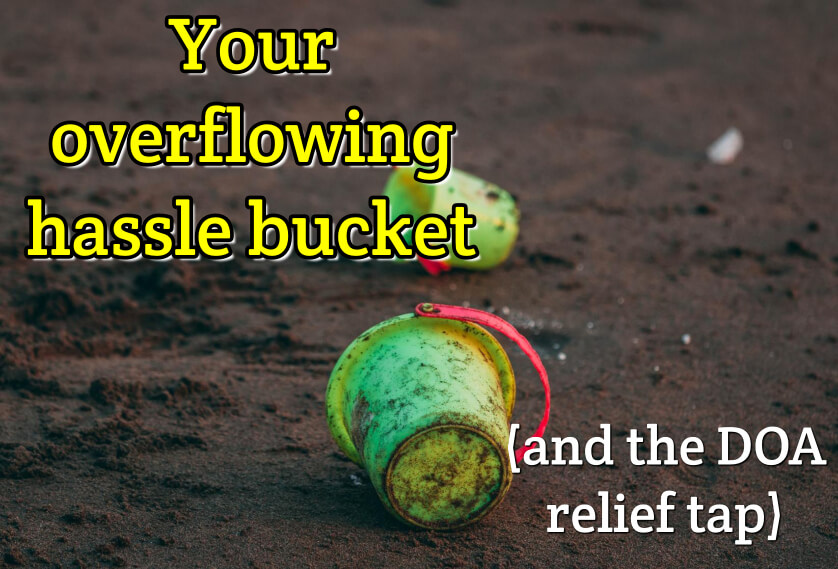Sometimes the hallmark of a business owner is that we pride ourselves on our busyness, as much as our business.
Most of the MSP owners I've met are high performing individuals. This is why we get frustrated with our staff and other mere mortals, who can't do what we do, at the pace we do it. 😁
But even you and I have our limits. I know I'm approaching mine right now. Several projects seem to be concluding at the same time, just as home life is getting busier. And the impending Easter holiday/project deadline is adding pressure.
Yes. This blog is my way of receiving counselling. Thanks for being there for me.
But no matter how busy I get, I rarely drop a ball
That's a dangerous thing to claim in public. I certainly don't get everything done when I say I will.
But I am able to make conscious decisions about what needs to be done now, and what can safely be postponed.
That's because I have used a simple but powerful productivity system for years and years.
It helps me to prioritise what's most important - which means, what's going to get me closer to my life goals.
I've distilled it down to 6 key things.
1) Set goals and review every single day
First thing I do every day is read my goals book. Yes, even at the weekend.
If you don't have written goals which are constantly top of your mind, you can't be more productive. Because true productivity is about doing less, not more. Which means prioritising more.
My goals book contains my vision board, which is a series of pictures representing the things I want in my life in the near future.
There's a picture of the house I'm going to own next. The Tesla that will sit on the gravel driveway. The villa somewhere hot where I'll be enjoying all 10 weeks of the school holidays... etc etc.
Next page is a summary of my 5 key goals for 2019, each containing 3 bullet points on the strategy. I tweak these throughout the year.
Achieving each of these business goals gets me closer to my life goals.
And the final page is a tracker, for my daily KPIs - sleep, exercise, etc.
2) Use software

Personally I'm an enormous fan of Todoist. I like the way it's drag & drop; syncs instantly and works exactly the same way across every device.
I use Todoist more than any other software. Apparently, over the years, I've already completed more than 48,000 tasks! 😲

It doesn't really matter what software you use. So long as you rely on it heavily.
Great software makes it a thousand times easier to be more productive while doing less.
3) Get everything out of your head
The most critical part of this system is to leave nothing sitting in your head. Ever.
A task or idea that exists only in your head is too easily lost. Or worse, takes up so much thinking space, it stops you moving onto the next idea.
Todoist has an inbox that I can add tasks to. I can even email them in using email or Siri. At night I have a pad next to my bed to write down ideas.
4) Separate projects and tasks
Within your software, you need two separate sets of to do lists.
The first are projects. These are the big things that move your business forward.
Each project has its own list of tasks, all broken down into the smallest possible chunks.
This allows me to sit and focus on a project for a few hours, before moving onto the next.
The other to do list is everyday tasks. These are things that need to be done. But they don't necessarily help you achieve anything.
I schedule tasks for specific days of the week, and swap them around when they don't get done.
5) Rank and dump
Not all tasks are equal. So find a system of ranking them that works best for you.
I've tried traffic light rankings before, and A/B/C. Now, I just keep it really simple:

Critically, I also identify tasks every day that are so unimportant, that it doesn't really matter whether I complete them or not.
These are tasks that I was never going to do anyway. But because they came out of my head, I had to write them down. And it didn't feel right to delete them, so I just filed them away somewhere safe.
I call this place the Black Hole.
Because I can't see the tasks I was never going to do anyway, I don't feel remotely stressed by them.

6) Plan tomorrow at the end of each day
This is the final work job of each day for me:
- Move any project items or tasks left over from today
- Read tomorrow's project and task list
- Re-arrange items to reflect ever changing priorities
- Look at calendar to estimate time available for GTD (Getting Things Done). Move some tasks to a different day so the list is grounded in reality
- Open wine




